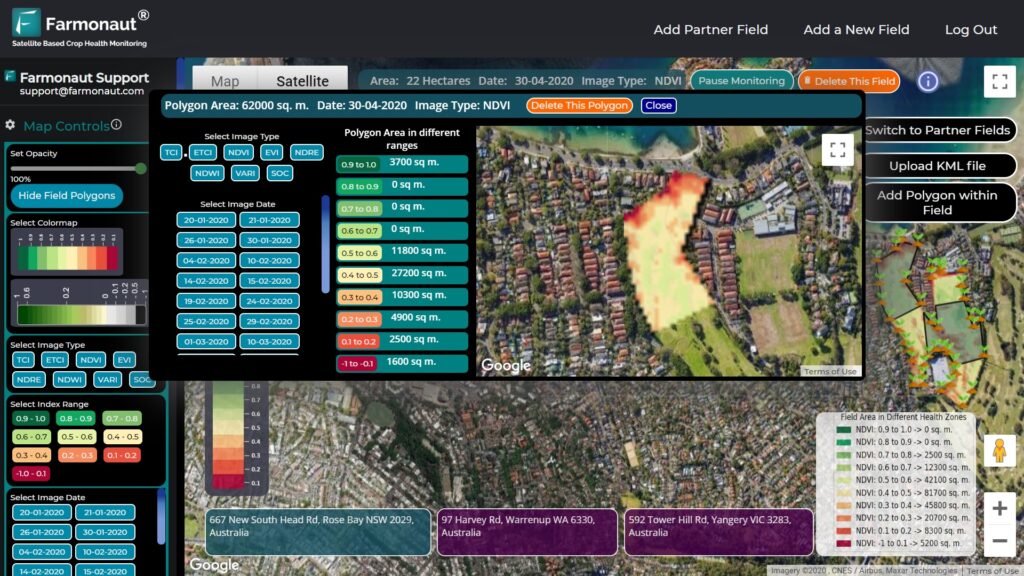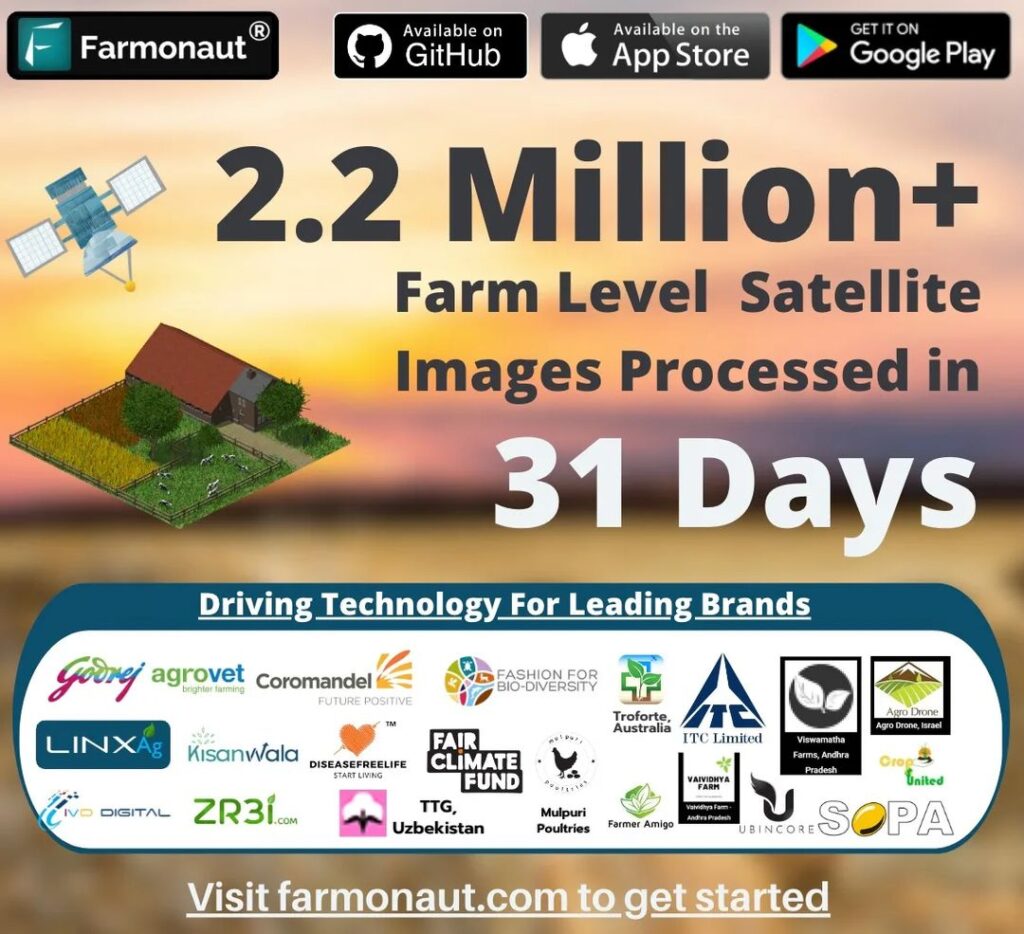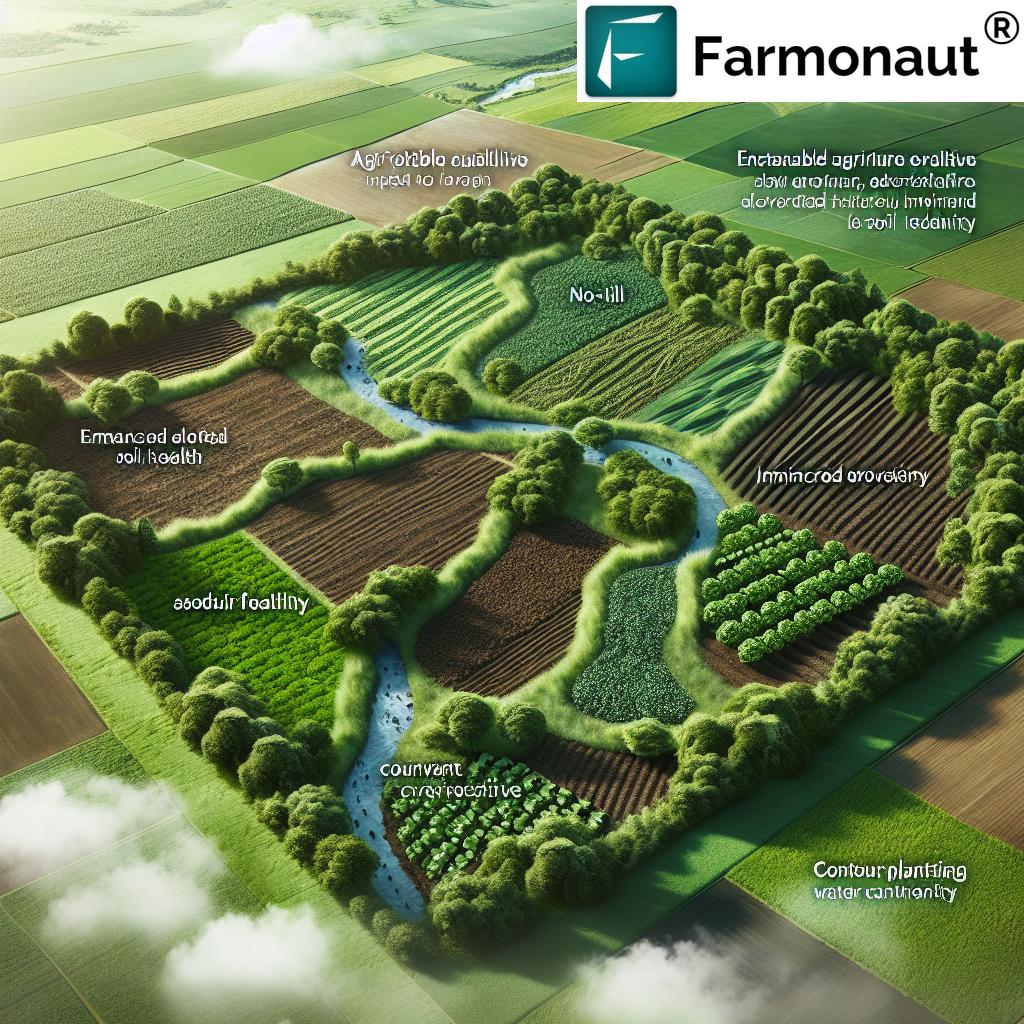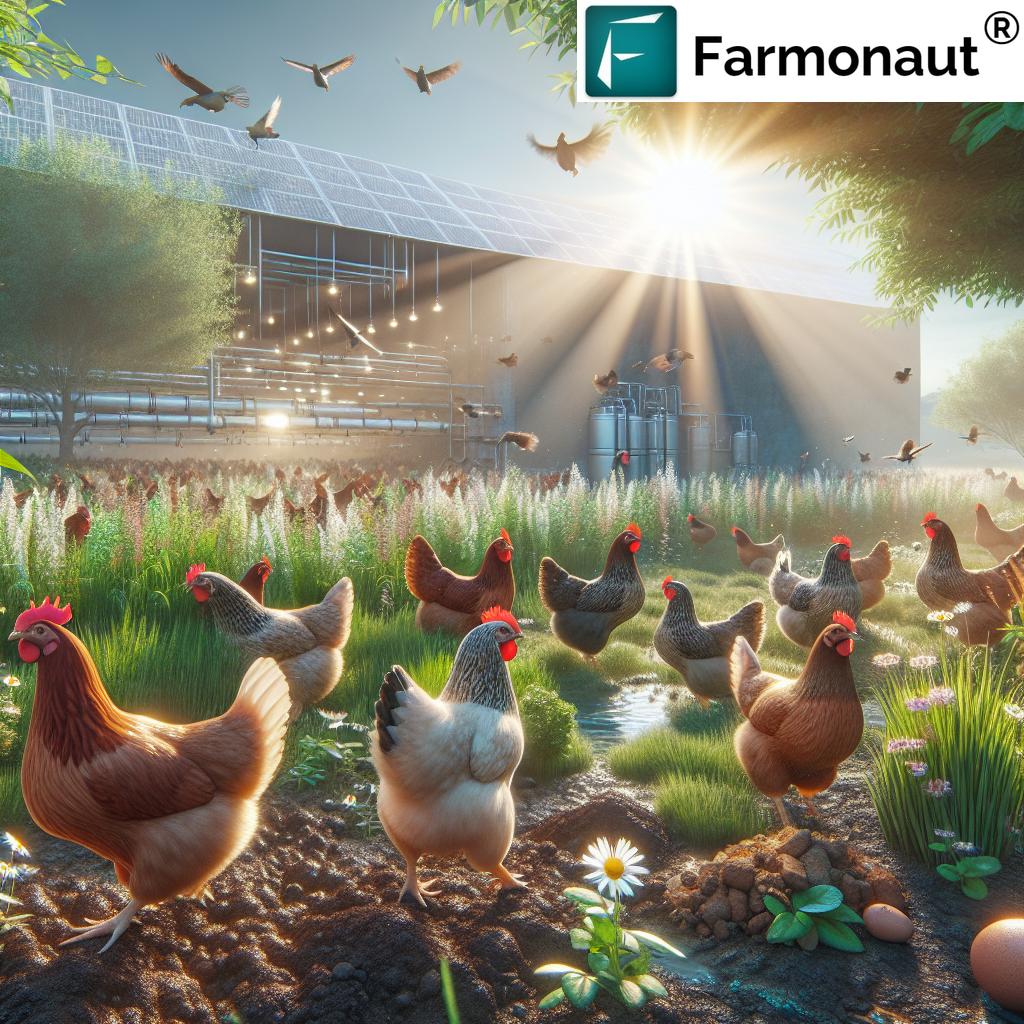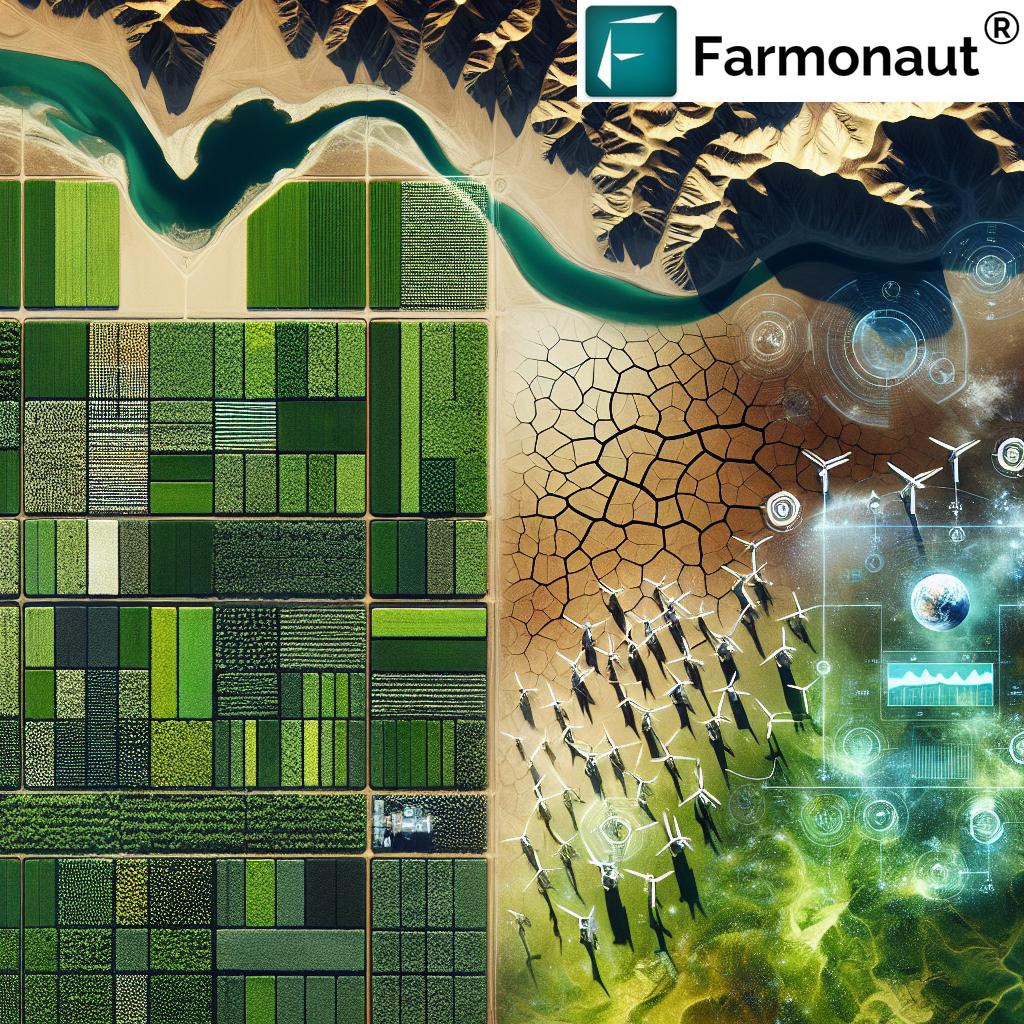Cotton Cultivation: Identifying the Ideal Soil Types for Optimal Growth and Yield
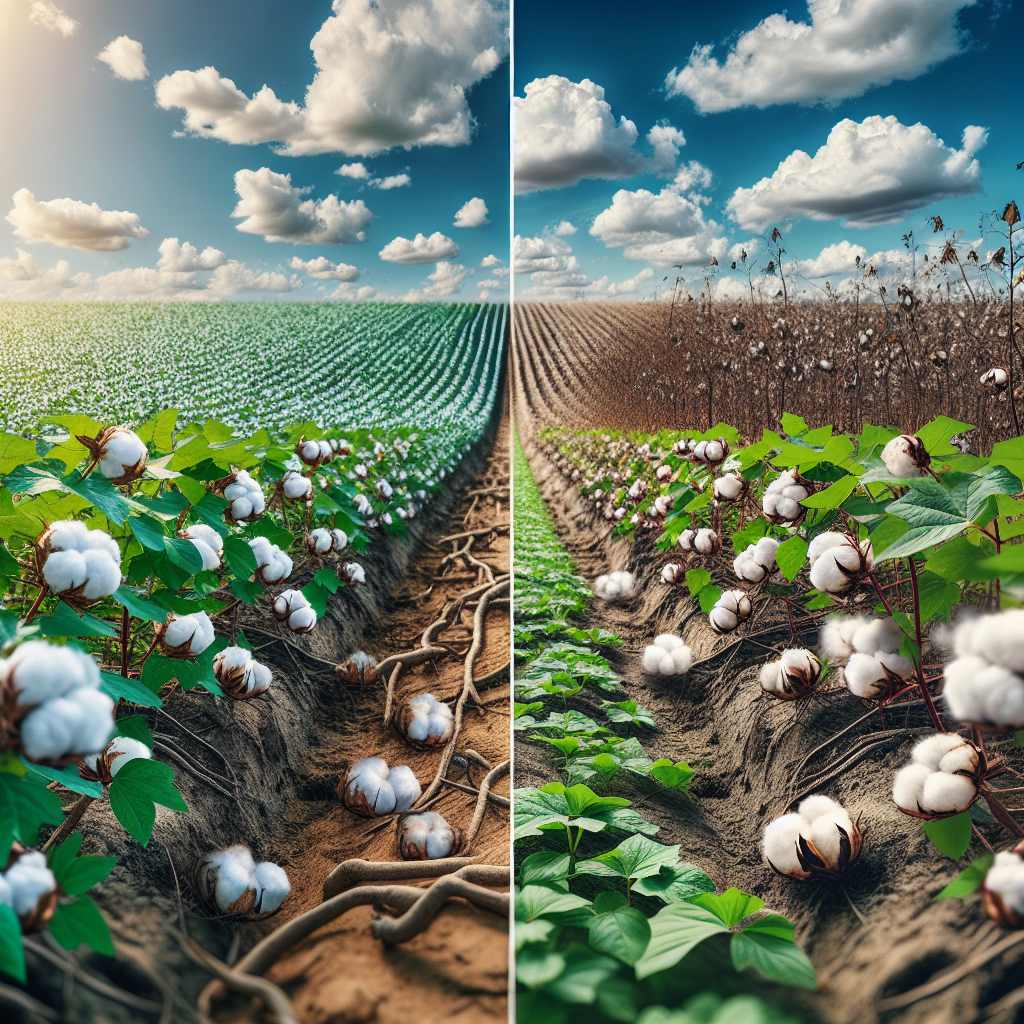
At Farmonaut, we understand the critical role that soil plays in successful cotton cultivation. As pioneers in agricultural technology, we’re committed to helping farmers maximize their yields through innovative solutions and data-driven insights. In this comprehensive guide, we’ll explore the ideal soil conditions for cotton growth, addressing the common questions: cotton grows best in which soil, cotton grows well in which soil, and soil where cotton grows? Let’s dive into the world of cotton cultivation and discover how the right soil can make all the difference.
Understanding Cotton’s Soil Preferences
Cotton is a versatile crop, but it thrives in specific soil conditions. To answer the question of cotton grows best in which soil, we need to consider several factors:
- Soil texture
- pH levels
- Drainage capacity
- Nutrient content
- Organic matter
Let’s examine each of these factors in detail to understand why certain soils are ideal for cotton cultivation.
Soil Texture: The Foundation of Cotton Growth
When considering soil where cotton grows, texture plays a crucial role. Cotton prefers:
- Loamy soils: A balanced mixture of sand, silt, and clay
- Sandy loams: Soils with a higher proportion of sand
- Clay loams: Soils with a significant clay content, but not too heavy
These soil types provide the perfect balance of water retention and drainage, allowing cotton roots to develop properly and access necessary nutrients.
pH Levels: Creating the Right Chemical Environment
To answer cotton grows well in which soil, we must consider pH levels. Cotton thrives in slightly acidic to neutral soils:
- Optimal pH range: 5.8 to 7.0
- Tolerable pH range: 5.5 to 8.0
Maintaining the right pH is crucial for nutrient availability and overall plant health.
Drainage: Ensuring Healthy Root Development
Good drainage is essential for cotton cultivation. The soil where cotton grows best has:
- Adequate pore space for water movement
- No compaction issues
- Ability to retain moisture without becoming waterlogged
Well-drained soils prevent root rot and promote healthy plant growth.
Nutrient Content: Feeding the Cotton Plant
To understand cotton grows best in which soil, we need to consider nutrient availability. Ideal cotton soils are:
- Rich in nitrogen (N)
- Adequate in phosphorus (P)
- Well-supplied with potassium (K)
- Containing essential micronutrients like zinc, boron, and manganese
A balanced nutrient profile supports robust growth and high-quality fiber production.
Organic Matter: The Soil’s Living Component
Organic matter content is crucial when determining cotton grows well in which soil. Soils with:
- 2-3% organic matter are ideal
- Higher organic content improves soil structure
- Enhance water-holding capacity
- Promote beneficial microbial activity
Organic matter contributes to overall soil health and productivity.
Specific Soil Types for Cotton Cultivation
Now that we’ve covered the key factors, let’s explore specific soil types that answer the question: cotton grows best in which soil?
1. Alluvial Soils
Alluvial soils are among the best for cotton cultivation:
- Deposited by rivers and streams
- Rich in nutrients
- Good water-holding capacity
- Excellent drainage properties
These soils are often found in river valleys and deltas, making them prime locations for cotton farming.
2. Black Cotton Soils (Vertisols)
Black cotton soils, also known as Vertisols, are well-suited for cotton:
- High clay content (30-80%)
- Excellent water retention
- Rich in calcium, magnesium, and aluminum
- Self-mulching properties
These soils are prevalent in regions with alternating wet and dry seasons, ideal for cotton cultivation.
3. Red and Yellow Soils
Red and yellow soils can support cotton growth when properly managed:
- Well-drained
- Acidic in nature (may require liming)
- Rich in iron oxides
- Responsive to fertilization
With appropriate amendments, these soils can produce good cotton yields.
4. Sandy Loams
Sandy loams are excellent for cotton production:
- Good drainage
- Easy root penetration
- Warm up quickly in spring
- Require careful irrigation management
These soils are particularly suitable in areas with adequate rainfall or irrigation facilities.
Soil Management Practices for Optimal Cotton Growth
Understanding cotton grows well in which soil is just the beginning. Proper soil management is crucial for maximizing yields:
1. Soil Testing and Analysis
Regular soil testing helps farmers:
- Determine nutrient levels
- Assess pH balance
- Identify potential issues early
At Farmonaut, we offer advanced soil analysis services to help farmers make informed decisions.
2. Crop Rotation
Implementing crop rotation:
- Improves soil structure
- Breaks pest and disease cycles
- Enhances nutrient availability
Rotating cotton with legumes or cereals can significantly improve soil health.
3. Conservation Tillage
Adopting conservation tillage practices:
- Reduces soil erosion
- Improves water infiltration
- Increases organic matter content
These methods help maintain the ideal soil where cotton grows.
4. Cover Cropping
Using cover crops between cotton seasons:
- Prevents soil erosion
- Adds organic matter
- Improves soil structure
- Enhances nutrient cycling
Cover crops contribute to long-term soil health and productivity.
5. Precision Nutrient Management
Implementing precision nutrient management:
- Optimizes fertilizer use
- Reduces environmental impact
- Improves crop yields
Farmonaut’s satellite-based crop monitoring system helps farmers apply nutrients precisely where and when they’re needed.
The Role of Technology in Cotton Soil Management
At Farmonaut, we leverage cutting-edge technology to help farmers optimize their cotton production:
Satellite-Based Crop Monitoring
Our advanced satellite imaging technology allows farmers to:
- Monitor crop health in real-time
- Detect early signs of stress or disease
- Optimize irrigation and fertilization
By providing timely insights, we help ensure that cotton grows in optimal soil conditions throughout the season.
AI-Powered Advisory System
Our Jeevn AI Advisory System offers:
- Personalized recommendations based on soil and crop data
- Weather forecasts and pest alerts
- Tailored management strategies for different soil types
This system helps farmers make data-driven decisions to maximize their cotton yields.
Blockchain-Based Traceability
Our blockchain technology enables:
- Transparent tracking of cotton from field to fabric
- Verification of sustainable soil management practices
- Enhanced trust in the cotton supply chain
This feature is particularly valuable for farmers and brands committed to sustainable cotton production.
The Future of Cotton Soil Management
As we look ahead, several trends are shaping the future of cotton soil management:
1. Precision Agriculture
Advancements in precision agriculture will allow for:
- Micro-level soil management
- Customized treatments for different soil zones within a field
- Real-time adjustments based on soil and plant data
Farmonaut is at the forefront of these developments, continually enhancing our satellite and AI technologies.
2. Regenerative Agriculture
The focus on soil health is driving interest in regenerative practices:
- Minimizing soil disturbance
- Maximizing crop diversity
- Keeping the soil covered
- Maintaining living roots in the soil year-round
These practices not only improve cotton yields but also contribute to carbon sequestration and overall ecosystem health.
3. Climate-Resilient Soil Management
As climate change impacts agriculture, soil management strategies are evolving:
- Developing drought-resistant soil structures
- Implementing water-conserving techniques
- Adapting to changing precipitation patterns
Farmonaut’s weather forecasting and AI advisory systems are crucial in helping farmers adapt to these challenges.
4. Integration of IoT and Soil Sensors
The Internet of Things (IoT) is revolutionizing soil monitoring:
- Real-time soil moisture sensors
- Continuous pH and nutrient level monitoring
- Integration with satellite data for comprehensive insights
While these technologies are promising, satellite-based monitoring remains the most cost-effective and scalable solution for most farmers.
Comparing Farmonaut’s Satellite System with Drone and IoT-Based Farm Monitoring
| Feature | Farmonaut Satellite System | Drone-Based Monitoring | IoT-Based Monitoring |
|---|---|---|---|
| Coverage Area | Large scale (thousands of acres) | Limited (hundreds of acres) | Limited to sensor placement |
| Frequency of Data Collection | Regular (every 3-5 days) | On-demand, weather dependent | Continuous |
| Initial Setup Cost | Low | High (equipment and training) | Moderate to High |
| Operational Complexity | Low (user-friendly interface) | High (requires skilled operators) | Moderate (maintenance required) |
| Weather Dependency | Low (can penetrate clouds) | High (affected by wind, rain) | Low |
| Data Processing Time | Fast (AI-powered analysis) | Moderate to Slow | Fast (real-time data) |
| Scalability | Highly Scalable | Limited Scalability | Moderate Scalability |
| Integration with Other Data Sources | High (weather, historical data) | Moderate | Moderate to High |
As the table illustrates, Farmonaut’s satellite-based system offers unparalleled coverage, cost-effectiveness, and ease of use, making it the ideal choice for cotton farmers looking to optimize their soil management practices.
Conclusion: Cultivating Success in Cotton Farming
Understanding cotton grows best in which soil is crucial for successful cultivation. From alluvial and black cotton soils to well-managed sandy loams, the right soil type combined with proper management practices can lead to exceptional yields. At Farmonaut, we’re committed to helping farmers leverage technology to make the most of their soil resources.
By utilizing our satellite-based crop monitoring, AI advisory systems, and blockchain traceability, cotton farmers can:
- Optimize soil health and productivity
- Reduce input costs while increasing yields
- Adapt to changing climate conditions
- Ensure sustainable and transparent cotton production
As we look to the future, the integration of advanced technologies with time-tested soil management practices will be key to meeting the growing global demand for cotton while preserving our precious soil resources.
Ready to transform your cotton farming practices? Explore Farmonaut’s innovative solutions:
- Download our mobile app:
Android |
iOS - Access our web application: Farmonaut Web App
- Integrate our API into your systems: Farmonaut API
- Learn more about our developer resources: API Documentation
Join us in revolutionizing cotton cultivation and soil management. Together, we can create a more sustainable and productive future for agriculture.
FAQs: Cotton Soil Management
-
Q: What is the best soil type for cotton cultivation?
A: Cotton grows best in well-drained, deep loamy soils with good water-holding capacity. Alluvial soils, black cotton soils (Vertisols), and sandy loams are particularly suitable. -
Q: How does soil pH affect cotton growth?
A: Cotton prefers slightly acidic to neutral soils with a pH range of 5.8 to 7.0. Soil pH affects nutrient availability and overall plant health. -
Q: Can cotton be grown in sandy soils?
A: Yes, cotton can be grown in sandy soils, but they require careful management, particularly in terms of irrigation and fertilization. Sandy loams are often ideal for cotton production. -
Q: How important is organic matter in cotton soil?
A: Organic matter is crucial for cotton soil health. It improves soil structure, water-holding capacity, and nutrient availability. Aim for 2-3% organic matter content in your cotton fields. -
Q: What are the signs of poor soil health in cotton fields?
A: Signs of poor soil health include stunted growth, yellowing leaves, reduced boll formation, and increased susceptibility to pests and diseases. Farmonaut’s satellite monitoring can help detect these issues early. -
Q: How can I improve heavy clay soils for cotton cultivation?
A: Improve heavy clay soils by adding organic matter, implementing conservation tillage practices, and ensuring proper drainage. Gypsum applications can also help improve soil structure. -
Q: What role does soil texture play in cotton growth?
A: Soil texture affects water retention, drainage, and root development. Medium-textured soils like loams provide the best balance for cotton growth. -
Q: How often should I test my soil for cotton cultivation?
A: Conduct comprehensive soil tests every 2-3 years, with more frequent testing for specific nutrients as needed. Farmonaut’s advisory system can help interpret test results and provide recommendations. -
Q: Can satellite imagery really help in soil management for cotton?
A: Yes, satellite imagery provided by Farmonaut can detect variations in soil moisture, nutrient deficiencies, and other stress factors, allowing for targeted management interventions. -
Q: How does climate change impact cotton soil management?
A: Climate change can affect soil moisture levels, erosion patterns, and nutrient cycling. Adapting soil management practices and using technologies like Farmonaut’s AI advisory system can help mitigate these impacts.
For more information on how Farmonaut can help you optimize your cotton soil management, visit our website or contact our team of experts.





